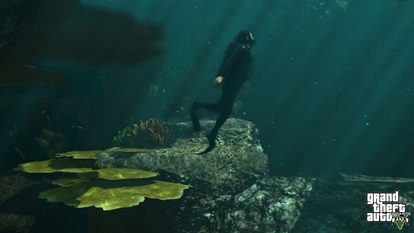A natural lab in Jharkhand
Discovered by a former professor, it showcases four stages of earth formation, reports Rajesh Roy.
Kumbatoli village in Tupudana Industrial Area on the outskirts of Ranchi has become the centre of attraction for earth science lovers from all over the country. Amidst several industrial units there exists a 'natural laboratory', showcasing the four vital stages of earth's formation.
Spread in a small area, the natural laboratory exhibits the layers of solid rocks, its top layer disintegration by storm and rain from asteroids, formation of rocky scrubland on which forests started, and lastly, the formation of earth (mitti) from rocky scrubland several million years later.
Former professor and head of Materials Science and Forge Technology Departments, National Institute of Foundry and Forge Technology, NM Jha claims to have first noticed the unique laboratory.
Jha now wants the Jharkhand Government to preserve the site and develop it as a natural laboratory of earth science to give practical knowledge to students about the earth formation.
At present, the local villagers use it as a pond for bathing.
Jha said that earth science and space shuttle study should be incorporated in the curriculum from high school.
"A majority of the students don't even know the basics about the earth formation and space shuttles. With the help of the natural laboratory, understanding the stages of the earth formation and its existence could be made easy and fun," he said.
A veteran in earth science, Jha said that students of several schools visited the site on his request.
"And their smiling faces said they had learnt something," he said.
Even the local youths seem keen to learn the things related to earth science. They want to be trained to explain visitors about the importance of the site.
"We have been watching the stones and the scrubland for several years now and have even seen slight bacterial changes. We can explain to the visitors in laymen's language what led to the formation of the earth," a local youth Sanjay Swansi said.
Jha said the earth in the solar system was formed around 4.6 billion years ago. Like other planets it began as a cloud of gas and dust spinning around the sun.
As the cloud swirled, it began to condense or clump together under the pull of its own gravity. Its temperature increased and it finally gathered into a ball of glowing molten rock and then started to cool off.
As the rocks became more solid, they gave off water vapour that condensed into clouds and fell as massive rainstorms lasting thousands of years.
The top layer of solid rocks disintegrated by rain and after lakhs of years the rocky scrubland was formed.
On the scrubland emerged plants and then bacterial changes led to formation of mitti, which was later harvested by mankind.
Catch all the Latest Tech News, Mobile News, Laptop News, Gaming news, Wearables News , How To News, also keep up with us on Whatsapp channel,Twitter, Facebook, Google News, and Instagram. For our latest videos, subscribe to our YouTube channel.


























